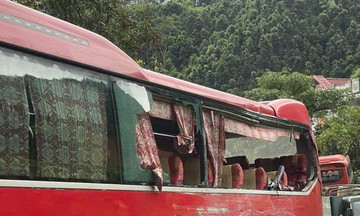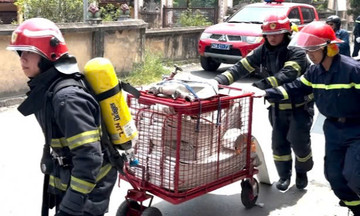 |
Construction on the Vung Ang - Bung expressway began in 1/2023 with a total investment of over 12,540 billion VND. The starting point is at the Ky Hoa commune intersection in Ha Tinh province, connecting to the Ham Nghi - Vung Ang expressway. The endpoint is in Bo Trach commune, Quang Tri province, connecting with the Bung - Van Ninh expressway (opened in April) at the Phong Nha junction. |
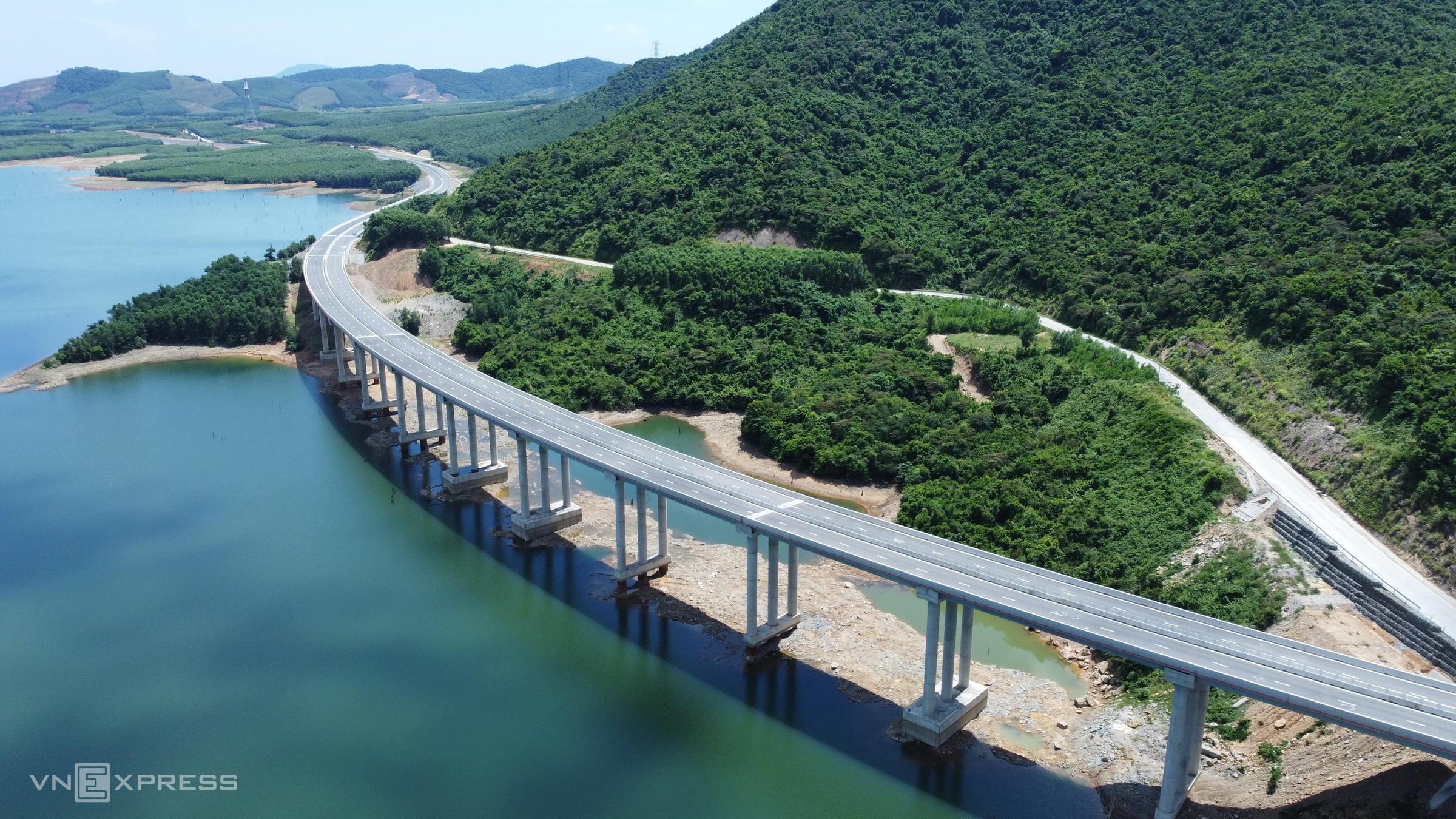 |
The Gianh River Bridge, approximately 2.8 km long and 17.5 m wide, has 4 lanes and cost over 1,000 billion VND. As the longest bridge on the north-south expressway through Quang Tri province, it is now complete and ready for traffic. The entire route has 33 bridges: 28 on the expressway and 5 crossing over it. |
The expressway traverses 13 km through Ha Tinh and over 42 km through Quang Tri. Phase one of the project includes 4 lanes, a 17 m roadbed, and a design speed of 80-90 km/h. The project is managed by Project Management Unit 6 (Ministry of Transport). The expressway navigates complex terrain, including mountains and lakes.
In the Ha Tinh section, the project includes 5 viaducts over lakes, dams, and valleys. Workers and engineers are currently applying asphalt concrete to the final spans of the bridges.
 |
Anti-glare barriers are being installed before the opening. Road markings and service roads are being finalized. Workers are also washing away mud and dirt accumulated on the road surface from construction vehicles. |
The Deo But Tunnel, the most significant component of the Vung Ang - Bung expressway, is almost one km long and has a total investment of over 1,000 billion VND. The tunnel passes through the Dong Nang mountain range in Ha Tinh province and is designed with two tubes, with the center of the left tube 45 m from the center of the right. The left tunnel is 716 m long, the right tunnel is 840 m long, each tunnel is 15 m wide and 8 m high.
In the initial phase, the right tunnel, in the north-south direction, will be opened first. On 17/7, the Ministry of Construction approved the investment for the completion of the left tunnel.
 |
Construction on the Van Ninh - Cam Lo expressway began in 1/2023, managed by the Ho Chi Minh Road Project Management Unit, with a total investment of nearly 9,920 billion VND. The 65.5 km expressway starts in Van Ninh commune, connecting to the Bung - Van Ninh expressway at the National Highway 9B intersection and the completed overpass. The terrain is relatively flat, except for the section through An Ma Lake which required mountain cutting. |
 |
Like the Vung Ang - Bung expressway, the Van Ninh - Cam Lo expressway lacks emergency stopping lanes, providing only designated emergency stopping points every 4-5 km. |
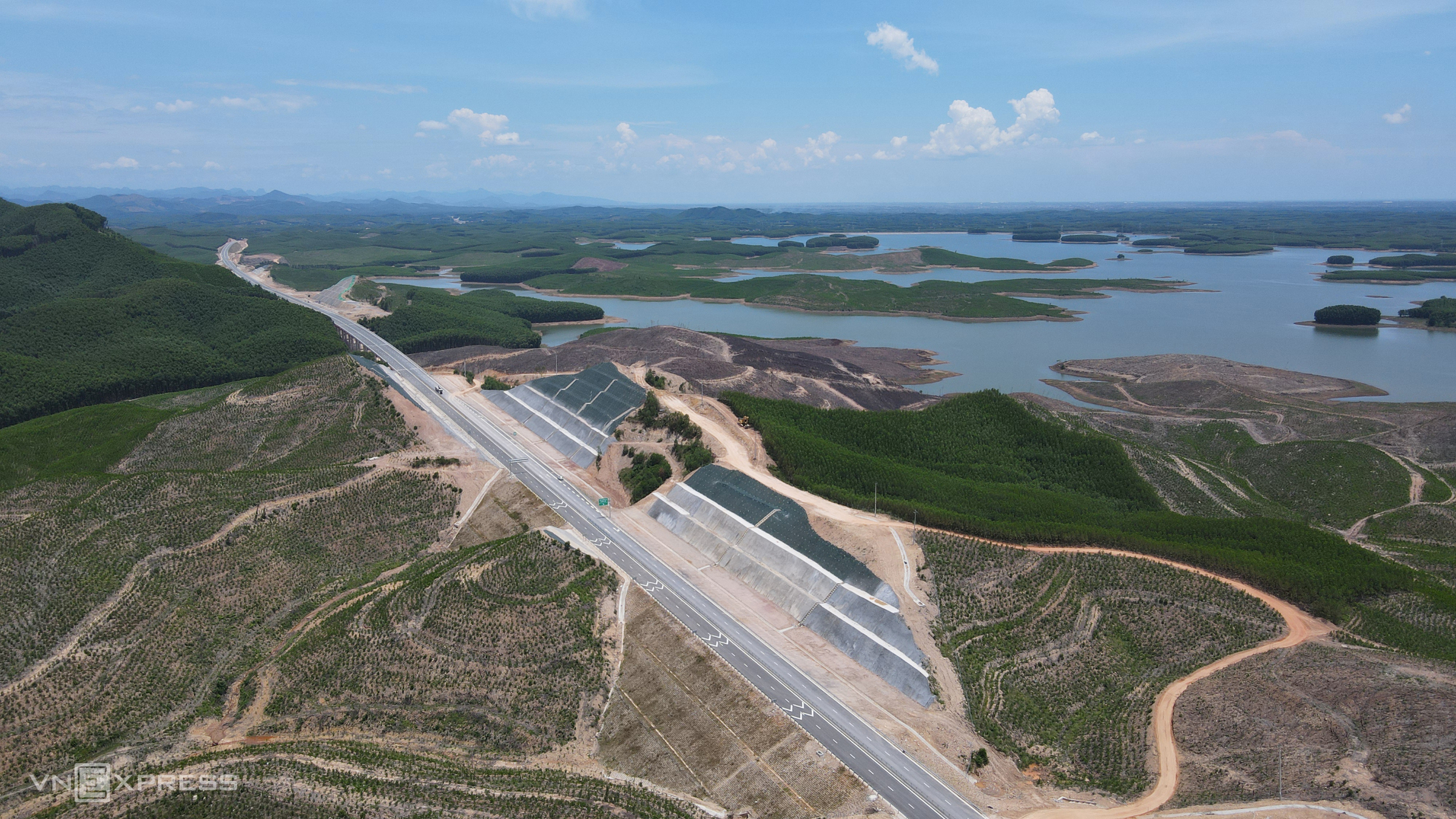 |
The Van Ninh - Cam Lo expressway runs almost parallel to the Ho Chi Minh Road and will intersect it at several points. Underpasses are being constructed at these intersections to ensure safe and smooth traffic flow after the project's completion. |
 |
Workers are collecting trash and cleaning drainage ditches along the expressway. Fencing and barbed wire have been installed along both sides. Only a few pedestrian bridges, drainage ditches, and service roads remain in the final stages of completion. |
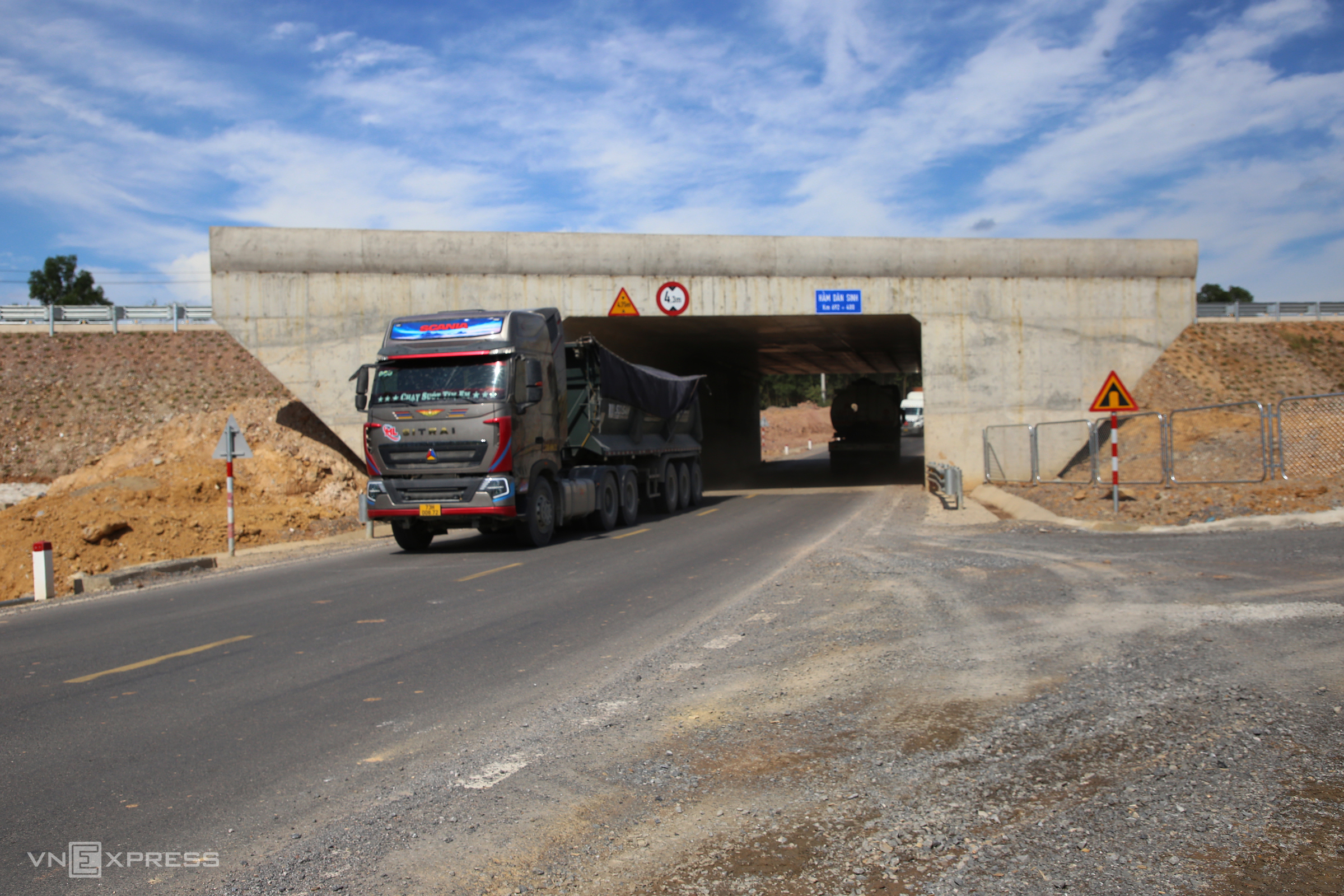 |
Contractors are utilizing machinery to finish the remaining sections of the road. |
 |
The Van Ninh - Cam Lo expressway ends in Hieu Giang commune, Quang Tri province, connecting to the Cam Lo - La Son expressway. Here, the intersection and overpass with National Highway 9 are undergoing asphalt paving, with the final components of the roads, bridges, and access roads nearing completion. |
Construction on the Van Ninh - Cam Lo expressway is progressing rapidly. Intersections for vehicles have been paved, and workers are painting road markings in nearly 37°C heat. Safety features like guardrails and signs have been fully installed along the route.
Similar to the Vung Ang - Bung expressway, the Van Ninh - Cam Lo expressway's first phase features 4 lanes with a maximum speed of 60-90 km/h. Upon completion, it will expand to 6 lanes with two emergency stopping lanes and a design speed of 100 km/h.
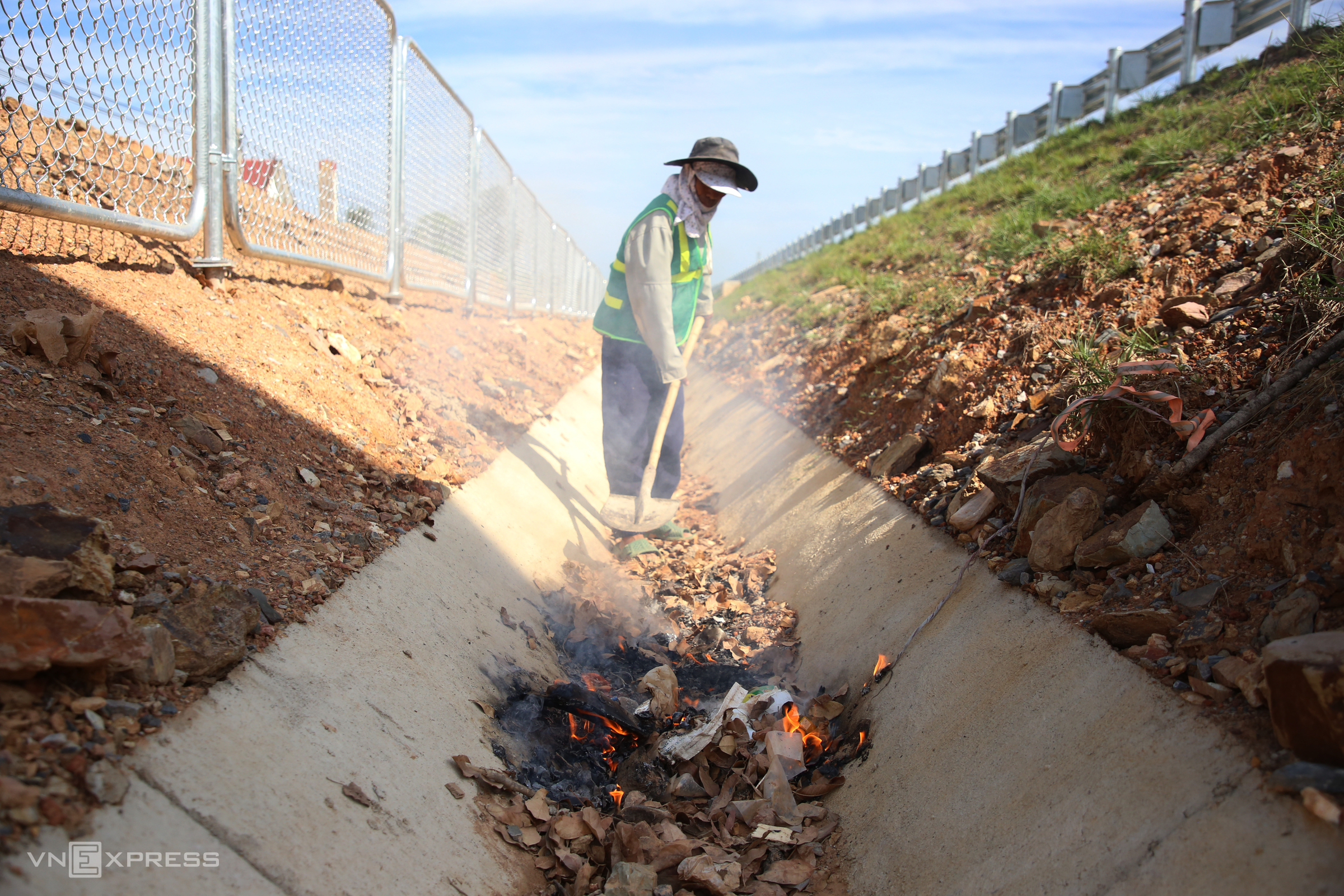 |
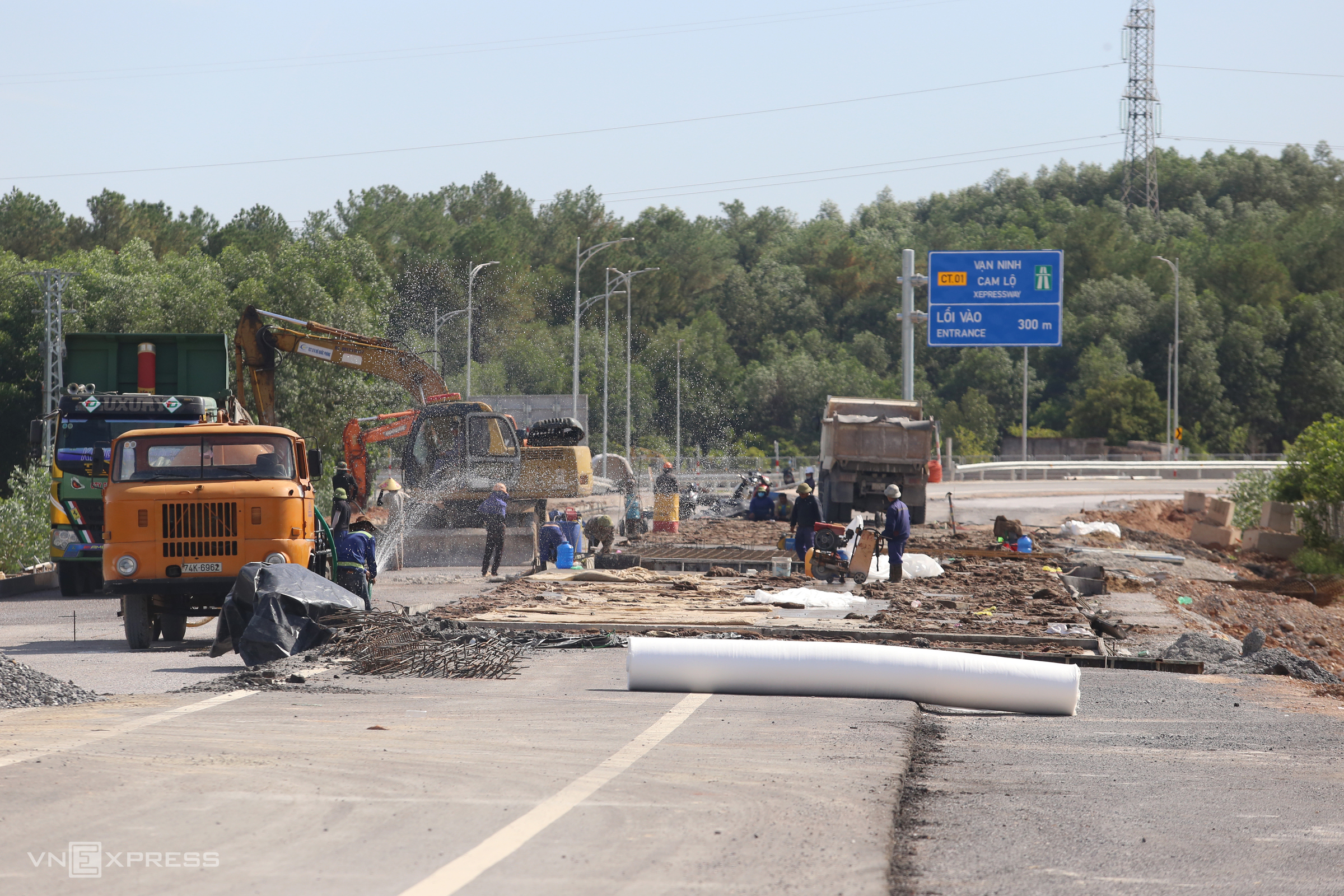 |
 |
Dac Thanh








